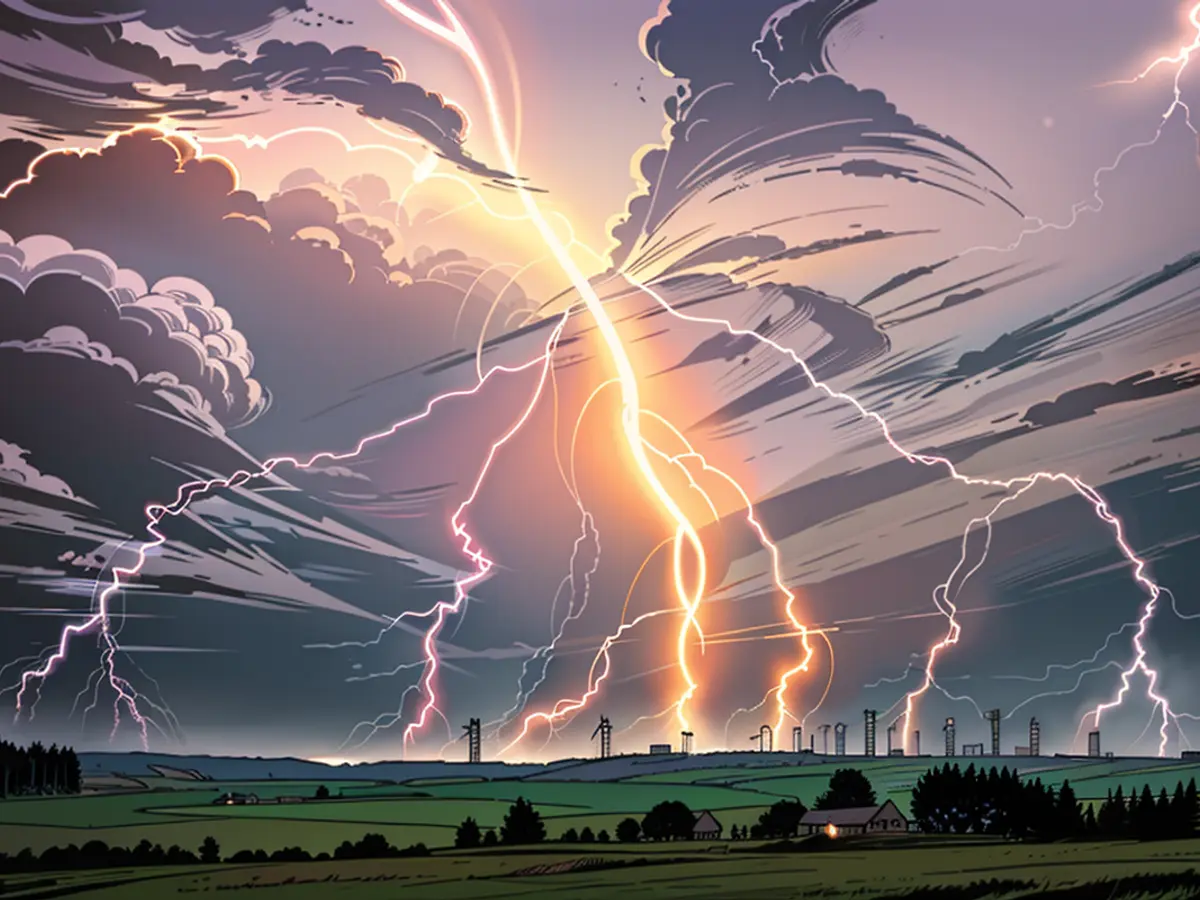- Understanding Thunder and its Accompanying Luminous Phenomena
Storms Roll In
Lightning slices the sky, thunder booms, and a unique aroma fills the air: Storms like these are common, particularly in the summer months. But what's really happening when lightning strikes? How enormous can these phenomena grow? And where does that rumbling thunder originate from?
Understanding Lightning
A lightning bolt is ignited by an electrical field within a thundercloud. Within the clouds, small ice crystals become positively charged, while water droplets turn negatively charged. The upper portion of the cloud becomes positively charged, while the lower part becomes negatively charged. Eventually, the energy is released - in the form of a lightning bolt.
This release can heat the air up to around 30,000 degrees Celsius and can stretch for miles. The longest lightning bolt ever recorded, according to the World Meteorological Organization (WMO), spanned over 750 kilometers across the United States.
These discharges can manifest in various ways, with cloud-to-ground strikes posing the greatest danger. Cloud-to-cloud strikes remain within the thundercloud, illuminating the sky. Cloud-to-air strikes, on the other hand, extend into the air without reaching the ground.
Risks Posed by Lightning
So-called dry lightning strikes can occur between clouds and the ground, without nearby precipitation. This type of lightning is particularly hazardous, often resulting in wildfires, especially after long periods of drought. In Germany, dry lightning can occur if the storm area that typically brings rain fails to pass over the strike location or leaves only minimal precipitation.
Humans are not immune to the dangers of lightning either. A single bolt can carry a current of over 100,000 amperes, causing burns, paralysis or even heart failure. According to the German Weather Service (DWD), the safest place during a lightning storm is inside a solid structure - or a car: The metal body redirects the lightning current outside of the vehicle.
Origins of Thunder
The thunder following a discharge is the result of the sudden expansion of air within the lightning channel, caused by the extreme heat. This rapid expansion creates a shockwave that spreads through the surrounding area, which our ears perceive as loud thunder.
If the lightning channel is perpendicular to the observer, all sound waves reach the observer simultaneously, resulting in a sharp crack. If the lightning channel is inclined towards the observer, the pressure waves from different points of the lightning channel reach the observer at different times, resulting in a prolonged rumble of thunder.
Determining the Distance of a Lightning Strike
To estimate the distance of a lightning strike, one can use the so-called "second rule." While the lightning is almost simultaneous to the sight, sound travels at about 330 meters per second. By counting the time between the visible discharge and the thunder, the distance to the lightning can be estimated: Three seconds correspond to about one kilometer.
The Aroma of Rain
The fragrance that fills the air during a summer rain is known as petrichor by scientists. Two Australians, drawing from ancient Greek terms "petros" (stone) and "ichor" (mythologically the fluid in the veins of the gods), discovered that when rain hits the ground, it stirs up dust particles that release various aromas, including the scent produced by plants during drought. The wind carries these scent molecules, allowing one to sometimes smell the rain before it even reaches a specific location.
The phenomenon can occur on cold days too, but it primarily occurs during the summer months. The ground must be slightly warmed to facilitate this, according to the German Weather Service (DWD). It is theoretically possible for the phenomenon to occur in the winter months, but the conditions are much less common.
Dictionary Entry for Petrichor - German Weather Service (DWD) German Weather Service (DWD) on Lightning German Weather Service (DWD) on Thunder "Nature" article on Petrichor German Weather Service (DWD) on the distance of thunderstorms "American Meteorological Society" on the longest measured lightning bolt in the world World of Physics: Thunderbolts ESKP: Lightning MSD Manuals: Injuries from Lightning Strikes.
After the release of a lightning bolt, the sudden expansion of air within the channel creates a shockwave, which we perceive as thunder.In some summer storms, a unique aroma fills the air, known as petrichor, which is caused by the release of various scent molecules when rain hits the ground, stirring up dust particles and plant scents.






